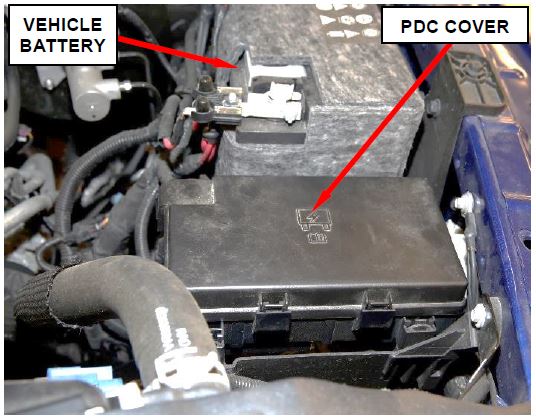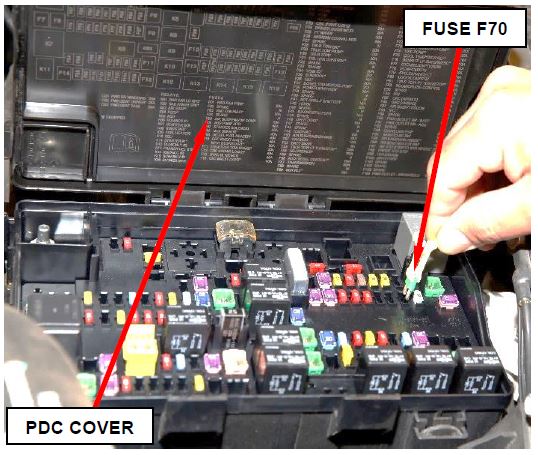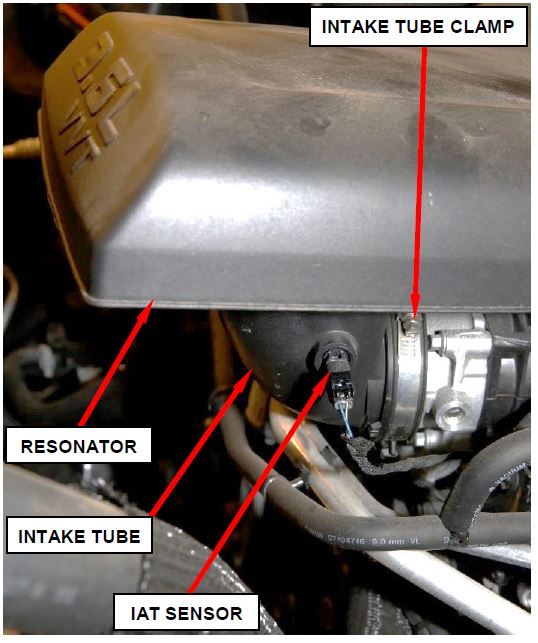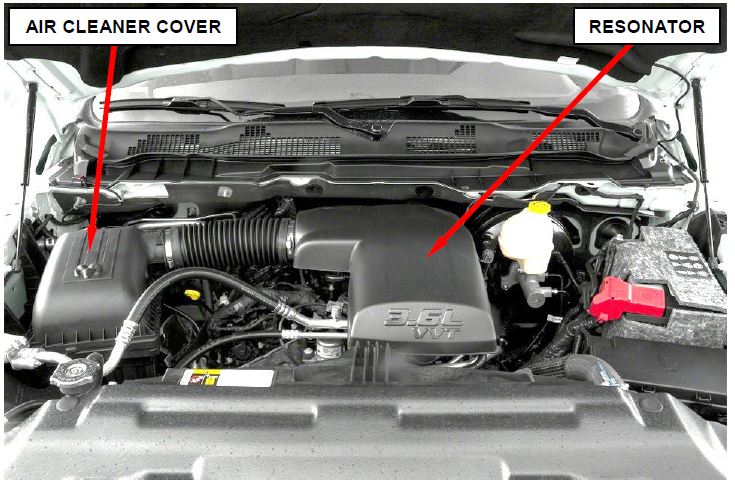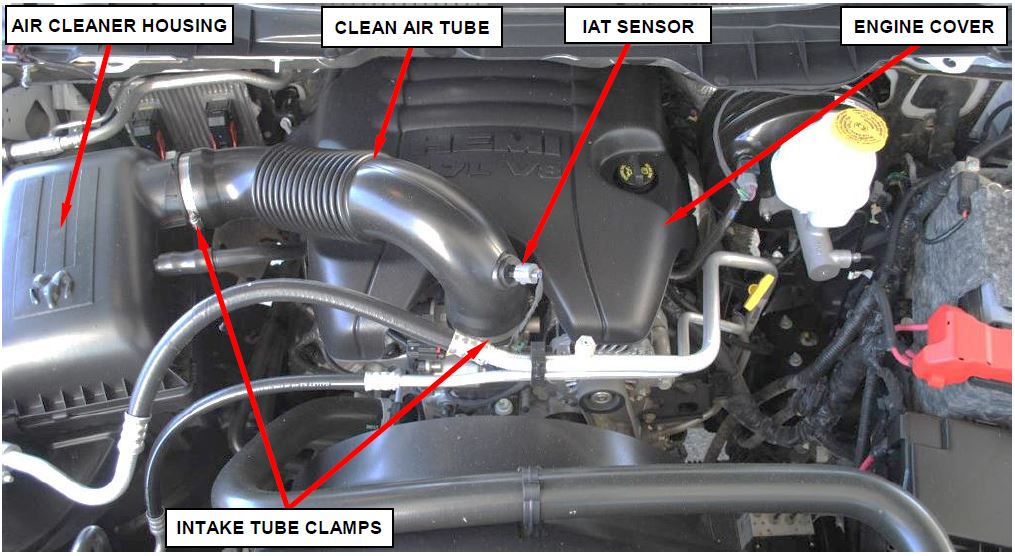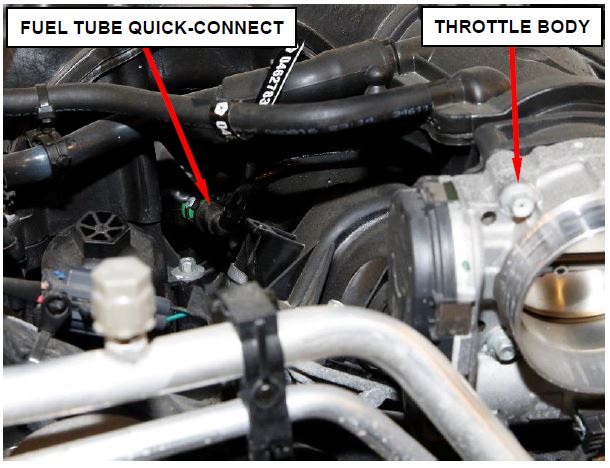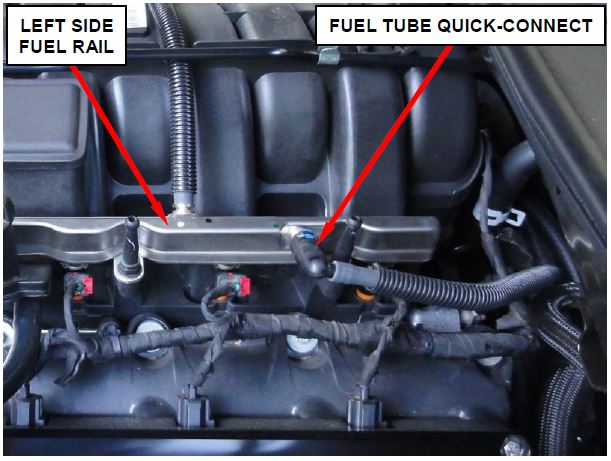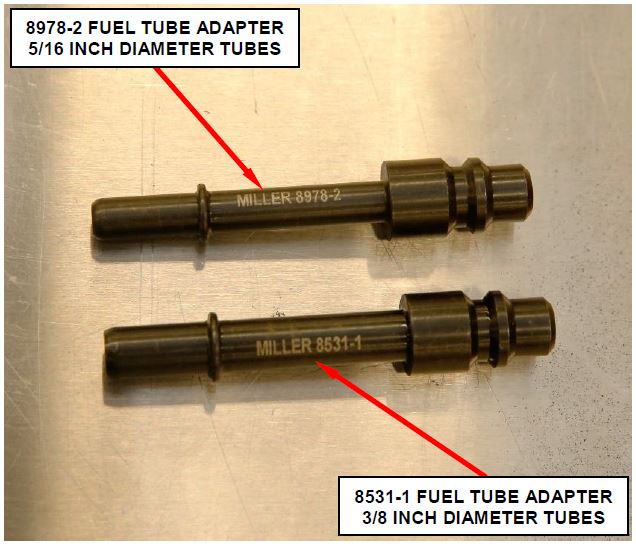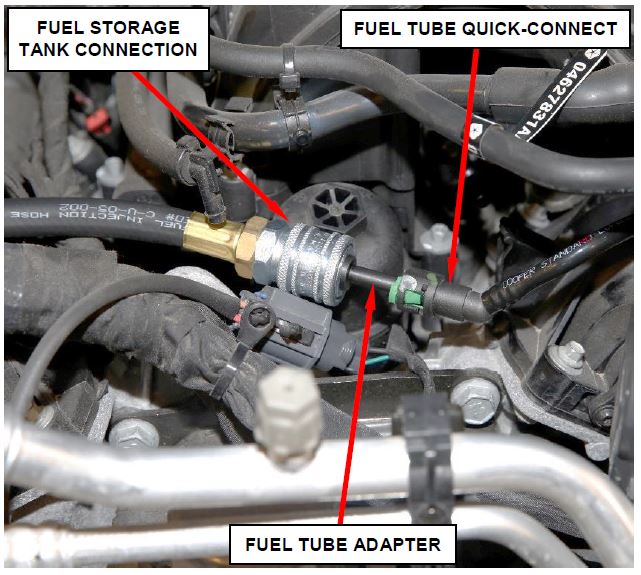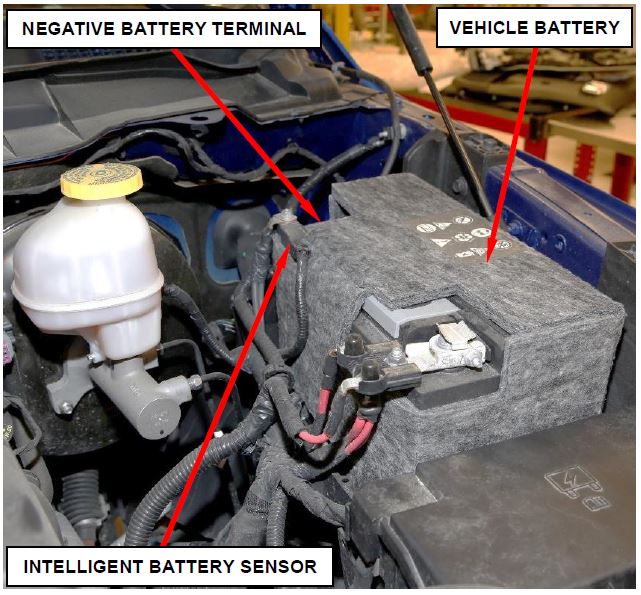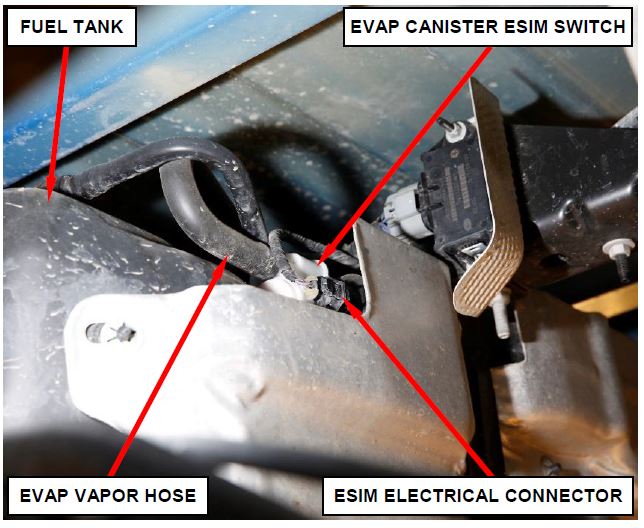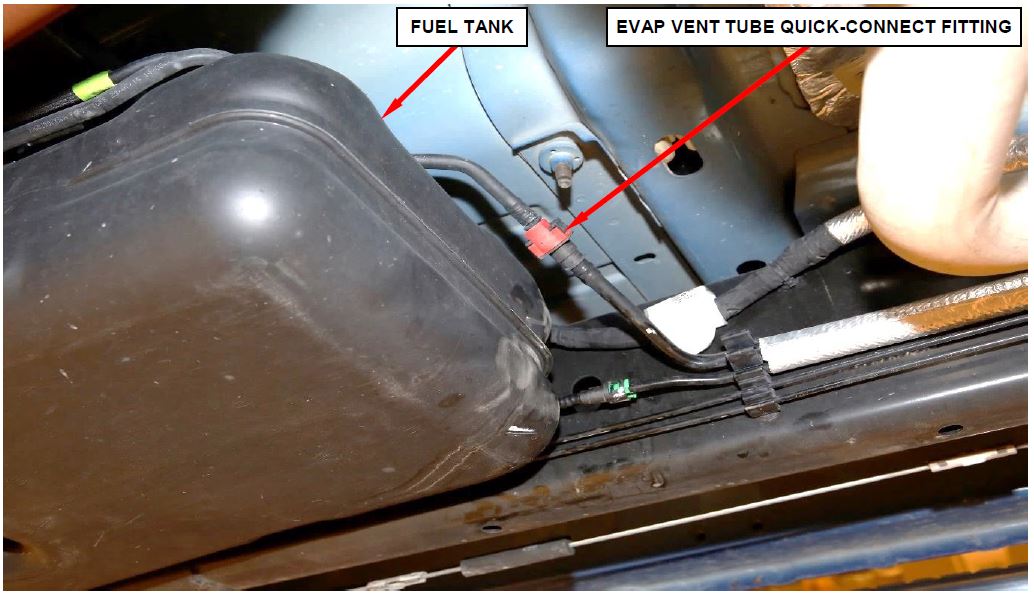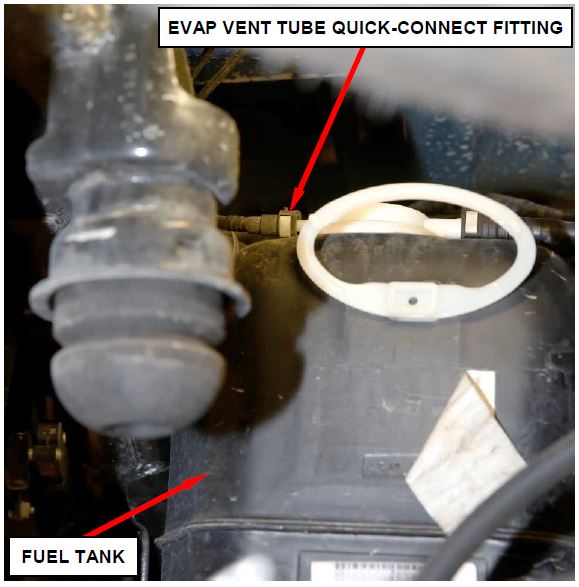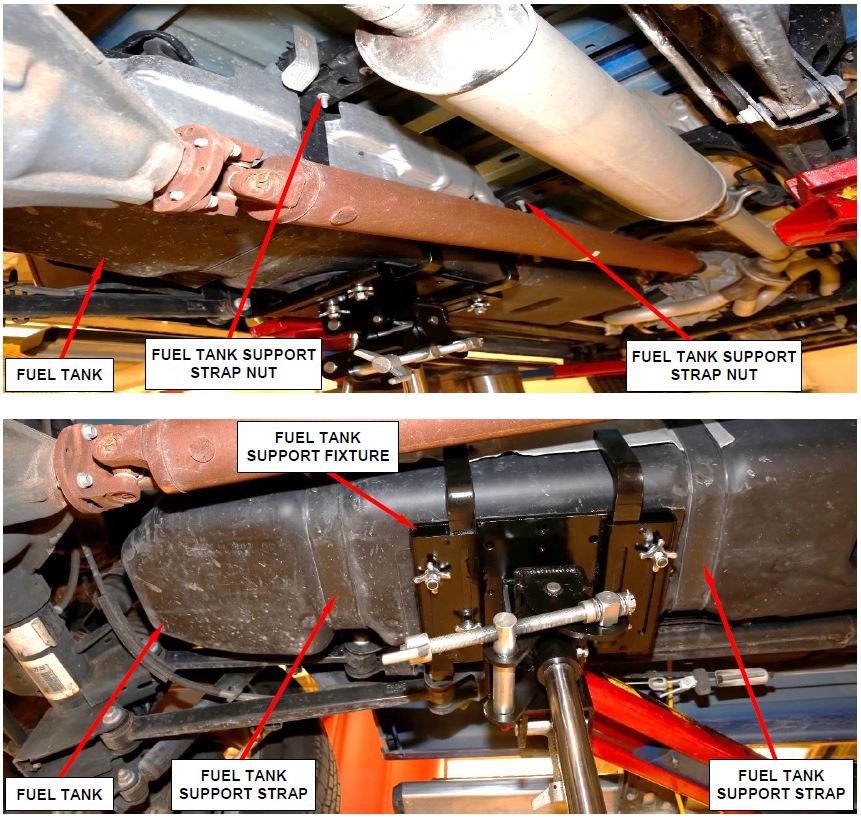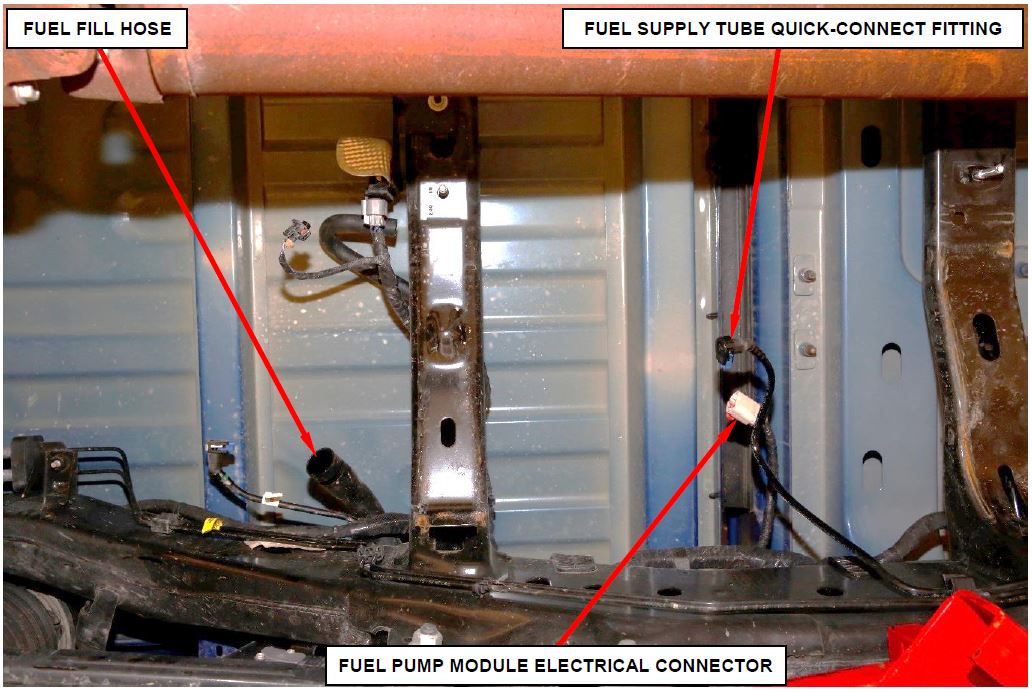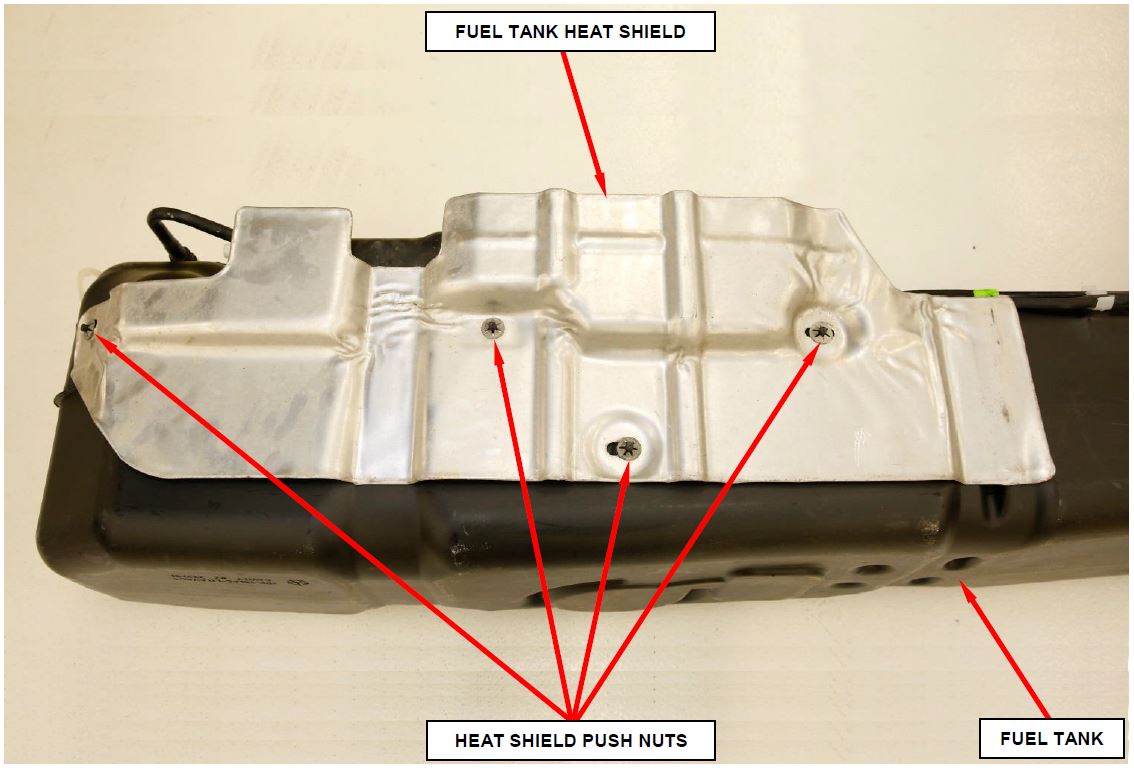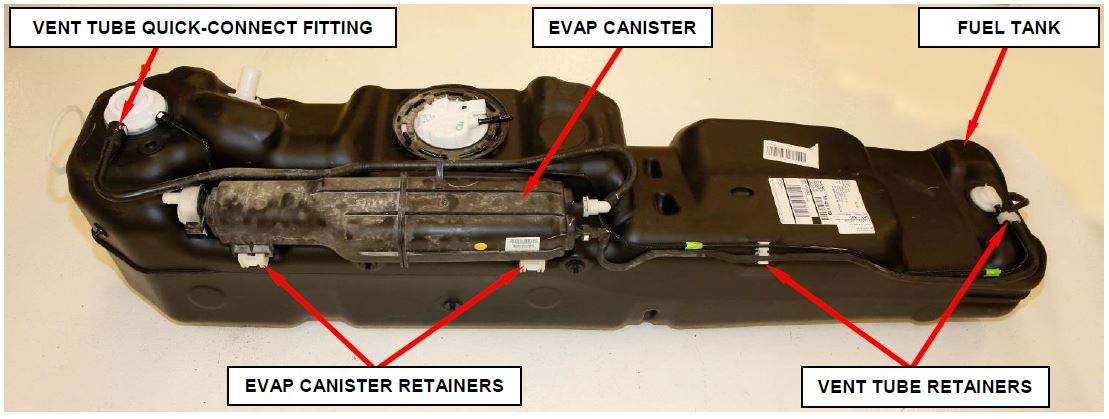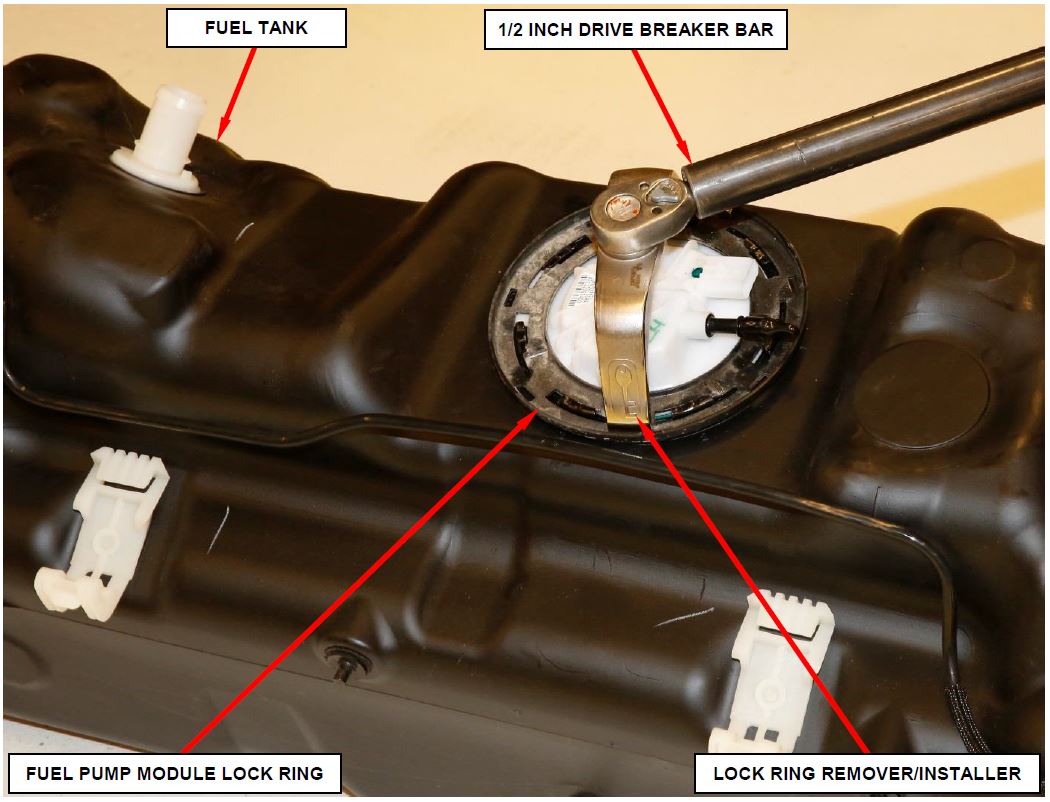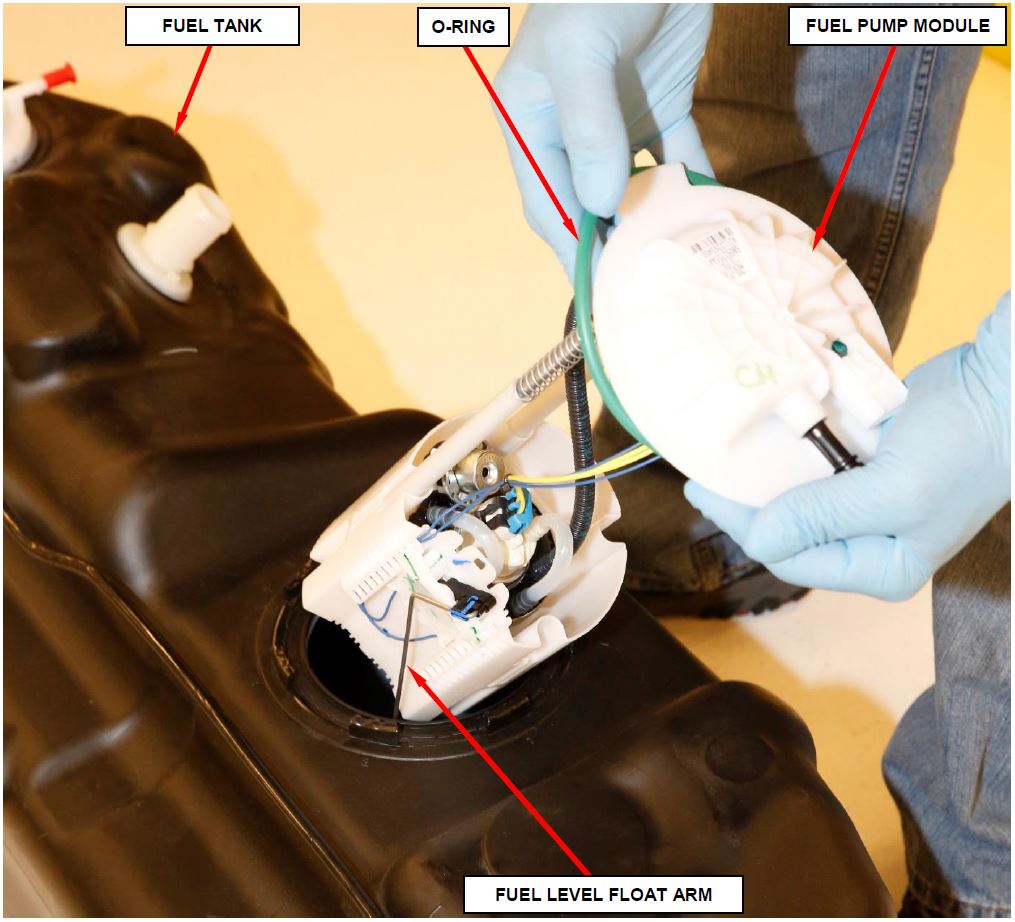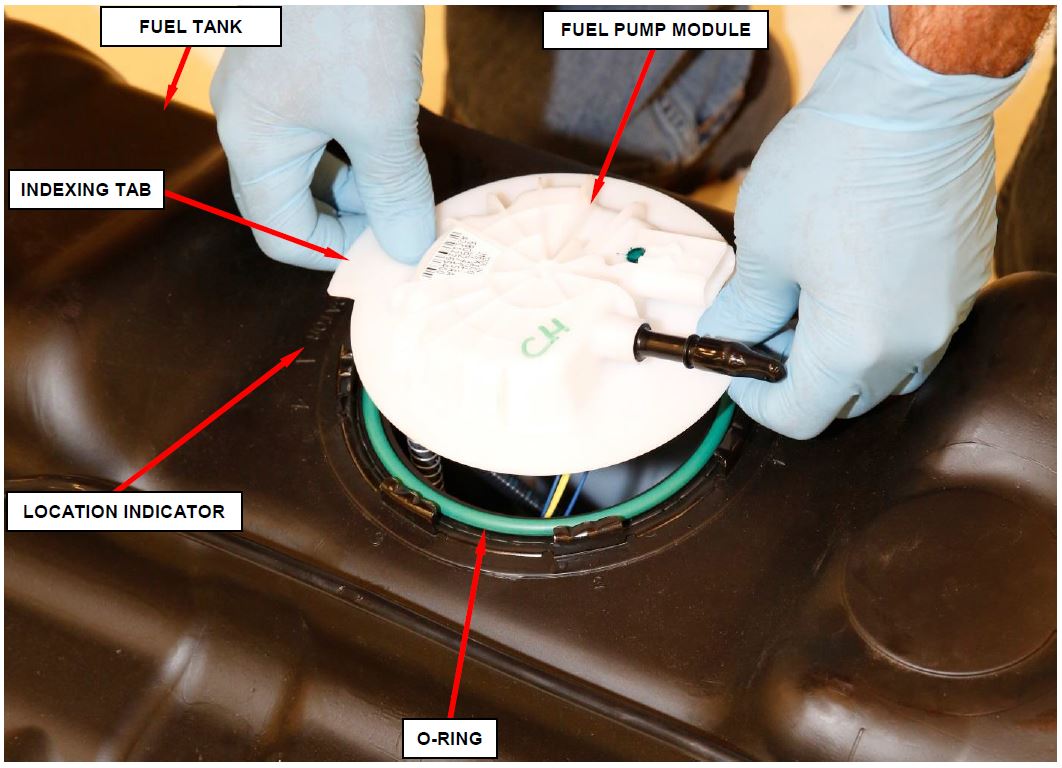| “This site contains affiliate links for which OEMDTC may be compensated” |
NHTSA Campaign Number: 17V434
Manufacturer Chrysler (FCA US LLC)
(FCA US LLC)
Components FUEL SYSTEM, GASOLINE
Potential Number of Units Affected 4
Possible Broken Fuel Tank Valve/FMVSS 301
In the event of a rollover crash, leaking fuel in the presence of an ignition source can increase the risk of a fire.
Summary
Chrysler (FCA US LLC) is recalling certain 2017 Ram
(FCA US LLC) is recalling certain 2017 Ram 1500 trucks.
1500 trucks.
The fuel tanks in the affected vehicles may have a broken fuel tank control valve which might leak fuel if the vehicle were to become inverted.
As such, these vehicles fail to comply with the requirements of Federal Motor Vehicle Safety Standard (FMVSS) number 301, “Fuel System Integrity.”
Remedy
Chrysler will notify owners, and dealers will replace the fuel tanks, free of charge.
will notify owners, and dealers will replace the fuel tanks, free of charge.
The recall is expected to begin August 21, 2017.
Owners may contact Chrysler customer service at 1-800-853-1403.
customer service at 1-800-853-1403.
Chrysler ’s number for this recall is T45.
’s number for this recall is T45.
Notes
Owners may also contact the National Highway Traffic Safety Administration Vehicle Safety Hotline at 1-888-327-4236 (TTY 1-800-424-9153), or go to www.safercar.gov.
Check if your Vehicle has a Recall
August 2017
Dealer Service Instructions for:
Safety Recall T45 / NHTSA 17V-434 Fuel Tank Control Valve
Models
| 2017 | (DS) | Ram 1500 Pickup 1500 Pickup |
NOTE: This recall applies only to the above vehicles equipped with a 32 Gallon Fuel Tank (Sales Code NFX) built at the Warren Truck Assembly Plant from May 05, 2017 through May 07, 2017 (MDH 050508 through 050710).
| IMPORTANT: Some of the involved vehicles may be in dealer new vehicle inventory. Federal law requires you to complete this recall service on these vehicles before retail delivery. Dealers should also consider this requirement toapply to used vehicle inventory and should perform this recall on vehicles in for service. Involved vehicles can be determined by using the VIP inquiry process. |
Subject
The fuel tank on about 4 of the above vehicles may have been assembled with a broken fuel tank control valve which could result in fuel leaking from the fuel tank in the event the vehicle were to become inverted. Fuel leaking from the fuel tank with the vehicle inverted is potentially non-compliant with Federal Motor Vehicle Safety Standard (FMVSS) No. 301, “Fuel System Integrity”. In the event of a rollover crash, leaking fuel could lead to an increased risk of vehicle fire.
Repair
Replace the fuel tank on all affected vehicles.
Parts Information
| Part Number | Quantity | Description |
|---|---|---|
| 68242021AC | 1 | 32 Gallon Fuel Tank |
| 55366298AA | 1 | O-Ring, Fuel Pump/Level Unit |
| 06104717AA | 2 | NUT, Hex Flange Lock, M10x1.50 (fuel tank straps) |
| 68202539AA | 4 | Nut, Push (fuel tank heat shield) |
Due to the small number of involved vehicles, no parts will be distributed initially. Dealers should order the parts for each vehicle at the time appointments are scheduled to assure that the part is available when the customer arrives.
Parts Return
No parts return required for this campaign.
Special Tools
The following special tools are required to perform this repair:
| wiTECH micro pod II |
| Laptop Computer |
| wiTECH Software |
| John Dow Gas Caddy |
| Fuel Decay Tool Kit |
| 5/16” fuel tube disconnect |
| 3/8” fuel tube disconnect |
| SAE Fuel Pump Lock Ring Wrench |
Service Procedure
WARNING: No sparks, open flames or smoking. Risk of injury to eyes and skin from contact with fuel. Wear protective clothing and eye protection. Risk of poisoning from inhaling and swallowing fuel. Pour fuel only into appropriately marked and OSHA approved containers. Failure to follow these instructions may result in possible serious or fatal injury.
WARNING: The fuel system is under constant high pressure even with engine OFF. Until the fuel pressure has been properly released from the system, do not attempt to open the fuel system. Do not smoke or use open flames/sparks when servicing the fuel system. Make sure the area in which the vehicle is being serviced is in a well ventilated area. Failure to comply may result in serious or fatal injury.
- Remove the fuel fill cap.
- Open the Power Distribution Center (PDC) cover to access the fuses (Figure 1).
Figure 1 – Power Distribution Center
NOTE: For location of the fuel pump fuse, refer to label on the underside of the PDC cover.
- Start and run the engine until it stalls.
- Attempt restarting the engine until it will no longer start.
- Place the ignition in the OFF position.
- 3.6L engines only, perform the following steps to gain access to the fuel supply tube quick-connect fitting:
a. Disconnect the Inlet Air Temperature (IAT) sensor (Figure 3).
b. Loosen the clamp securing the resonator air intake tube to the throttle body (Figure 3).
Figure 3 – 3.6L Air Intake Tube and Resonator Assembly
c. Release the air cleaner cover latches (Figure 4).
d. Remove the air cleaner cover from the lower air cleaner housing (Figure 4).
NOTE: The resonator (engine cover) is bonded to the air intake tube. Do not attempt to separate them. The resonator Resonator Assembly and intake tube must be removed as an assembly.
e. Pull the front of the resonator with air intake tube away from the throttle body while lifting from the rear of the resonator to separate from the ball stud mounts (Figure 4).
Figure 4 – 3.6L Resonator and Air Cleaner Cover
- 5.7L engines only, perform the following steps to gain access to the fuel supply tube quick-connect fitting:
a. Disconnect the Inlet Air Temperature (IAT) sensor (Figure 5).
b. Loosen the clamps securing the clean air tube to the air cleaner housing and throttle body (Figure 5).
c. Remove the clean air tube from the air cleaner housing and throttle body (Figure 5).
NOTE: The engine cover front grommets are a ball stud type mount and the rear grommets are a sliding peg design.
d. Remove the engine cover by first lifting the front of the engine cover up to separate the engine cover front grommets from the ball studs on the intake manifold. Then slightly raise the front of the engine cover and slide forward to remove the rear engine cover pegs from the grommets on the rear of the intake manifold (Figure 5).
Figure 5 – 5.7L Clean Air Tube and Engine Cover
CAUTION: Before separating a Quick-Connect fitting, pay attention to what type of fitting is being used. This will prevent unnecessary fitting or fitting latch breakage.
NOTE: Excessive fuel spillage onto the gaskets can cause gaskets to expand and dislodge from gasket groove.
CAUTION: When removing the fuel supply tube from the fuel inlet tube at the fuel rail, care must be taken that the Figure 6 – 3.6L Fuel Tube Quick-Connect fuel inlet tube is not being over-flexed. Damage to the fuel rail inlet tube may occur.
- Place a rag or towel below the fuel tube quick-connect fitting at the fuel rail (Figure 6 or 7).
- Disconnect the fuel supply tube quick-connect fitting from the fuel inlet tube at the fuel rail (Figure 6 or 7).
Figure 6 – 3.6L Fuel Tube Quick-Connect
Figure 7 – 5.7L Fuel Tube Quick-Connect
NOTE: Due to a one-way check valve installed into the fuel fill fitting at the tank, the tank cannot be drained at the fuel fill cap.
NOTE: Tool number 8978-2 is used on 5/16 inch diameter fuel tubes while tool number 8531-1 is used on 3/8 inch diameter fuel tubes (Figure 8).
Figure 8 – Fuel Tube Adapter Fittings
- Install the appropriate fuel tube adapter fitting to the fuel supply tube (Figure 9).
- Connect an OSHA approved fuel storage tank such as the John Dow Gas Caddy 320-FC-P30-A or equivalent to the fuel tube adapter fitting (Figure 9).
Figure 9 – Fuel Tube Adapter Connected (3.6L Shown 5.7L Similar)
- Install fuel pump fuse F70 to the PDC then close the PDC cover (Figures 1 and 2).
- Install a battery charger
 and verify that the charging rate provides 13.2 to 13.5 volts. Do not allow the charger to time out during the fuel evacuation process. Set the battery charger timer (if so equipped) to continuous charge.
and verify that the charging rate provides 13.2 to 13.5 volts. Do not allow the charger to time out during the fuel evacuation process. Set the battery charger timer (if so equipped) to continuous charge. - Connect the wiTECH micro pod II to the vehicle data link connector.
- Place the ignition in the “RUN” position.
- Open the wiTECH 2.0 website.
- Enter your “User id” your “Password” and your “Dealer Code”, then select “Finish” at the bottom of the screen.
- From the “Vehicle Selection” screen, select the appropriate vehicle.
- From the “Action Items” screen, select the “Topology” tab.
- From the “Topology” screen, click on the “PCM” icon.
- From the “PCM” screen, select the “Actuators” tab.
- From the “Actuators” screen, select “Fuel Pump Relay Control State Actuator Start Options”. Select “ON” and click “Start” to begin fuel tank evacuation.
- Once fuel tank is drained, turn the ignition to the “OFF” position.
- Remove the battery charger from the vehicle.
- Remove the fuel tube adapter fitting from the fuel supply tube and plug the fuel supply tube with a shipping cap to prevent spillage.
- Disconnect and isolate the negative battery cable by removing only the captive nut securing the terminal end to the post (Figure 10)
NOTE: If equipped with an Intelligent Battery Sensor (IBS), disconnect the IBS connector first before disconnecting the negative battery cable.
Figure 10 – Negative Battery Cable
- Raise and support vehicle.
- Disconnect the electrical connector from Evaporative Emissions (EVAP) canister Emission System Integrity Monitor (ESIM) switch located at the rear of the fuel tank (Figure 11).
- Disconnect the vapor hose from the EVAP canister ESIM switch (Figure 11).
Figure 11 – EVAP Canister ESIM Switch
- Disconnect the EVAP vent tube quick-connect fitting at the front of the fuel tank (Figure 12).
Figure 12 – EVAP Vent Tube Quick-Connect Fitting at Front of Fuel Tank
- Disconnect the EVAP vent tube quick-connect fitting at the rear of the fuel tank (Figure 13).
Figure 13 – EVAP Vent Tube Quick-Connect Fitting at Rear of Fuel Tank
- Using a suitable hydraulic jack such as OTC® High-Lift Transmission Jack 1728 with a fuel tank adapter such as OTC® Fuel Tank Handler 1758, support the fuel tank (Figure 14).
- Remove and discard the two nuts securing the fuel tank support straps, then remove and save both fuel tank support straps (Figure 14).
- Carefully lower the fuel tank a few inches to gain access to the top of the fuel tank.
Figure 14 – Fuel Tank Support Straps
- Disconnect the electrical connector at the fuel pump module (Figure 15).
- Disconnect the fuel supply tube quick-connect fitting at the fuel pump module (Figure 15).
- Loosen the fuel fill hose retaining clamp at the fuel tank and disconnect the fill hose from the fuel tank (Figure 15).
- Lower the fuel tank then remove the fuel tank from the support fixture.
Figure 15 – Fuel Tank Electrical, Fuel and EVAP Connections
- Remove and discard the four push nuts securing the fuel tank heat shield (Figure 16).
- Remove and save the fuel tank heat shield (Figure 16).
Figure 16 – Fuel Tank Heat Shield
- Disconnect the EVAP canister rear vent tube quick-connect fitting from the rear of the fuel tank (Figure 17).
- Release the EVAP canister front vent tube from the retainers on the fuel tank (Figure 17).
- Release the EVAP canister from the retainers on the fuel tank (Figure 17).
Figure 17 – Fuel Tank with EVAP Canister
Figure 18 – EVAP Canister
NOTE: Prior to removing the fuel pump module, use compressed air to remove any accumulated dirt and debris from around fuel tank opening.
CAUTION: An indexing tab is located on top of the main fuel pump module to clock its position into the fuel tank, note its location for later installation of the fuel pump module to the NEW fuel tank.
- Position the lock ring remover/installer 9340 into the notches on the outside edge of the lock ring (Figure 19).
- Install a 1/2 inch drive breaker bar into the lock ring remover/installer 9340 (Figure 19).
- Rotate the breaker bar counterclockwise to remove the lock ring. Save the lock ring for reuse (Figure 19).
Figure 19 – Lock Ring Remover/Installer
- Remove the fuel pump module from the fuel tank. Be careful not to bend the fuel level float arm during removal (Figure 20).
CAUTION: Whenever the fuel pump module is serviced, the rubber O-ring seal must be replaced.
- Remove and discard the rubber O-ring seal (Figure 20).
- Destroy to prevent reuse of the old fuel tank and dispose of the fuel tank by following locally approved methods and regulations.
Figure 20 – Fuel Pump Module
CAUTION: An indexing tab is located on top of the main fuel pump module to clock its position into the fuel tank. The fuel pump module must be properly located in the fuel tank for the fuel level gauge to work properly.
- Align the NEW rubber O-ring seal and position the fuel pump module into the fuel tank opening (Figure 21).
CAUTION: A NEW fuel pump module rubber O-ring seal must be installed.
- Rotate the fuel pump module until the indexing tab on the fuel pump module aligns with the location indicator on the fuel tank. This step must be performed to prevent the float from contacting the side of the fuel tank.
Figure 21 – Fuel Pump Module and O-Ring Installation Alignment
- Position the fuel pump module lock ring over top of the fuel pump module (Figure 22).
- Position the lock ring remover/installer 9340 tool into the notches on the outside edge of the lock ring (Figure 19).
- Install a 1/2 inch drive breaker bar into the lock ring remover/installer 9340 tool (Figure 19).
- Rotate the breaker bar clockwise until all seven notches of the lock ring have engaged.
- Install the EVAP canister with vent tubes attached to the fuel tank (Figure 18).
- Engage the EVAP canister into the retainers securing the EVAP canister to the fuel tank (Figure 17).
- Install the EVAP front vent tube into the tube retainers on the fuel tank (Figure 17).
- Connect the EVAP rear vent tube quick-connect fitting to the rear of the fuel tank (Figure 17).
- Position the fuel tank heat shield to the fuel tank (Figure 16).
- Install four NEW push nuts securing the fuel tank heat shield to the fuel tank (Figure 16).
- Secure the fuel tank onto the fuel tank support fixture.
- Raise and position the fuel tank leaving room to make the connections at the top of the fuel tank.
- Connect the fuel supply tube to the fuel pump module (Figure 15).
- Connect the electrical connector to the fuel pump module (Figure 15).
- Connect the fuel fill hose to the fuel tank and securely tighten the fuel fill hose retaining clamp (Figure 15).
- Raise the fuel tank until snug to the vehicle body.
- Install the fuel tank straps and install NEW Tighten the fuel tank strap nuts to 41 N·m (30 ft. lbs.) (Figure 14).
- Remove the hydraulic jack with fuel tank support fixture.
- Connect the EVAP vent tube quick-connect fitting at the rear of the fuel tank (Figure 13).
- Connect the EVAP vent tube quick-connect fitting at the front of the fuel tank (Figure 12).
- Connect the vapor hose to the EVAP canister ESIM switch (Figure 11).
- Connect the electrical connector to the EVAP canister ESIM switch (Figure 11).
- Lower the vehicle.
- Connect the fuel tube quick-connect fitting at the fuel rail (Figure 6 or 7).
- 3.6L engines only, perform the following steps to install the air duct system:
a. Lubricate the two rubber ball stud sockets on the resonator.
b. Install the resonator to the throttle body inlet. Push the resonator down onto the two locating ball studs until the rubber mount sockets are fully seated. (Figure 4).
c. Tighten the band clamp to 4 N·m (35 in. lbs.) (Figure 3).
d. Connect the IAT sensor electrical connector (Figure 3).
e. Align the air cleaner cover to the lower air cleaner cover.
f. Secure the air cleaner cover latches (Figure 4).
- 5.7L engines only, perform the following steps to install the air duct system:
NOTE: The engine cover front grommets are a ball stud type mount and the rear grommets are a sliding peg design.
a. Slightly tilt the rear of the engine cover and slide the rear engine cover pegs into the grommets on the rear of the intake manifold until the cover stops (Figure 5).
NOTE: While installing the engine cover the front ball studs will make a popping or suction sound as the ball studs are inserted into the front grommets.
b. Lower the front of the engine cover and line up the front ball studs with the grommets on the front of the intake manifold. Push the engine cover down onto the two locating ball studs until the rubber mount sockets are fully seated (Figure 5).
c. Lightly lift the front of the engine cover to insure the front ball studs are seated into the front grommets correctly. Check the rear of the engine cover to verify that the pegs are located in the grommets.
d. Install the clean air tube onto the air cleaner housing and the throttle body. (Figure 5).
e. Tighten the band clamps at the air cleaner housing and throttle body to 4 N·m (35 in. lbs.) (Figure 5).
f. Connect the IAT sensor electrical connector (Figure 5).
- Connect the negative battery cable and tighten nut to 5 N·m (45 in. lbs.) (Figure 10).
- If equipped, connect the Intelligent Battery Sensor (IBS) (Figure 10).
- Fill the fuel tank and install the fuel cap.
- Start the engine and check for leaks at all fuel tank connections.
- Turn the ignition to the “OFF” position.
NOTE: One or more Diagnostic Trouble Codes (DTCs) may have been stored in the PCM memory due to disconnecting fuel pump module circuit. A diagnostic scan tool must be used to erase a DTC.
- Install a battery charger
 and verify that the charging rate provides 13.2 to 13.5 volts. Set the battery charger timer (if so equipped) to continuous charge.
and verify that the charging rate provides 13.2 to 13.5 volts. Set the battery charger timer (if so equipped) to continuous charge. - Connect the wiTECH micro pod II to the vehicle data link connector
- Place the ignition in the “RUN” position.
- Open the wiTECH 2.0 website.
- Enter your “User id” your “Password” and your “Dealer Code”, then select “Finish” at the bottom of the screen.
- From the “Vehicle Selection” screen, select the appropriate vehicle.
- Select the “All DTCs” tab, then click “Clear All DTCs”, click “Continue” and then select “Close”.
- Turn the ignition to the “OFF” position and then remove the wiTECH micro pod II device from the vehicle.
- Remove the battery charger from the vehicle then close the hood.
- Return the vehicle to the customer.
Completion Reporting and Reimbursement
Claims for vehicles that have been serviced must be submitted on the DealerCONNECT Claim Entry Screen located on the Service tab. Claims paid will be used by FCA to record recall service completions and provide dealer payments.
Use the following labor operation number and time allowance:
| Labor Operation Number | Time Allowance | |
|---|---|---|
| Replace Fuel Tank | 14-T4-51-82 | 1.7 hours |
Add the cost of the parts plus applicable dealer allowance to your claim. In addition, enter “MATL” in the Part Number section of your claim with the applicable Material Allowance where appropriate.
NOTE: See the Warranty Administration Manual, Recall Claim Processing Section, for complete recall claim processing instructions.
Dealer Notification
To view this notification on DealerCONNECT, select “Global Recall System” on the Service tab, then click on the description of this notification.
Owner Notification and Service Scheduling
All involved vehicle owners known to FCA are being notified of the service requirement by first class mail. They are requested to schedule appointments for this service with their dealers. A generic copy of the owner letter is attached.
Vehicle Lists, Global Recall System, VIP and Dealer Follow Up
All involved vehicles have been entered into the DealerCONNECT Global Recall System (GRS) and Vehicle Information Plus (VIP) for dealer inquiry as needed.
GRS provides involved dealers with an updated VIN list of their incomplete vehicles. The owner’s name, address and phone number are listed if known. Completed vehicles are removed from GRS within several days of repair claim submission.
To use this system, click on the “Service” tab and then click on “Global Recall System.” Your dealer’s VIN list for each recall displayed can be sorted by: those vehicles that were unsold at recall launch, those with a phone number, city, zip code, or VIN sequence.
Dealers must perform this repair on all unsold vehicles before retail delivery. Dealers should also use the VIN list to follow up with all owners to schedule appointments for this repair.
Recall VIN lists may contain confidential, restricted owner name and address information that was obtained from the Department of Motor Vehicles of various states. Use of this information is permitted for this recall only and is strictly prohibited from all other use.
Additional Information
If you have any questions or need assistance in completing this action, please contact your Service and Parts District Manager.
Customer Services / Field Operations
FCA US LLC
This notice applies to your vehicle,
[Model Year and Model]
VIN XXXXXXXXXXXXXXXXX
T45/NHTSA 17V-434
LOGO
VEHICLE PICTURE
YOUR SCHEDULING OPTIONS
- RECOMMENDED OPTION
Call your authorized Chrysler /
/
Dodge / Jeep
/ Jeep ® / RAM Dealership
® / RAM Dealership
- Call the FCA Recall Assistance Center at 1-800-853-1403. An agent can confirm part availability and help schedule an appointment
- Visit our Recall Website, mopar.com or scan below.
QR Code
You can find your nearest dealer and review all your scheduling options from this website. You will be asked to provide your Vehicle Identification Number (VIN) to protect and verify your identity. The last eight characters of your VIN are provided above.
DEALERSHIP INSTRUCTIONS
Please reference Safety Recall T45.
IMPORTANT SAFETY RECALL
Fuel Tank Control Valve
Dear [Name],
This notice is sent to you in accordance with the National Traffic and Motor Vehicle Safety Act.
FCA has decided that a defect, which relates to motor vehicle safety, exists in certain [2017 Model Year (DS) Ram 1500 Pickup] vehicles.
It is extremely important to take steps now to repair your vehicle to ensure the safety of you and your passengers.
WHY DOES MY VEHICLE NEED REPAIRS?
The fuel tank on your vehicle [1] may have been assembled with a broken fuel tank control valve which could result in fuel leaking from the fuel tank in the event the vehicle were to become inverted. Fuel leaking from the fuel tank with the vehicle inverted is potentially noncompliant with Federal Motor Vehicle Safety Standard (FMVSS) No. 301, “Fuel System Integrity”. In the event of a rollover crash, leaking fuel could lead to an increased risk of vehicle fire.
HOW DO I RESOLVE THIS IMPORTANT SAFETY ISSUE?
FCA will repair your vehicle [2] free of charge (parts and labor). To do this, your dealer will replace the fuel tank. In addition, your dealer will require your vehicle for proper check-in, preparation, and check-out during your visit. Your time is important to us; please be aware that these steps may require more time. The estimated repair time is two hours. We recommend that you schedule a service appointment to minimize your inconvenience. Please bring this letter with you to your dealership.
TO SCHEDULE YOUR FREE REPAIR CALL 1-800-853-1403
OR YOUR CHRYSLER , DODGE
, DODGE , JEEP OR RAM DEALER TODAY
, JEEP OR RAM DEALER TODAY
WHAT IF I ALREADY PAID TO HAVE THIS REPAIR COMPLETED?
If you have already experienced this specific condition and have paid to have it repaired, you may visit www.fcarecallreimbursement.com to submit your reimbursement request online. [3] Once we receive and verify the required documents, reimbursement will be sent to you within 60 days. If you have had previous repairs performed and/or already received reimbursement, you may still need to have the recall repair performed.
We apologize for any inconvenience, but are sincerely concerned about your safety. Thank you for your attention to this important matter.
Customer Assistance/Field Operations
Fiat Chrysler
Chrysler Automobiles US LLC
Automobiles US LLC
Mr. Mrs. Customer
1234 Main Street
Hometown, MI 48371
[1] If you no longer own this vehicle, please help us update our records. Call the FCA Recall Assistance Center at 1-800-853-1403 to update your information.
[2] If your dealer fails or is unable to remedy this defect without charge and within a reasonable time, you may submit a written complaint to the Administrator, National Highway Traffic Safety Administration, 1200 New Jersey Ave., S.E., Washington, DC 20590, or you can call the toll-free Vehicle Safety Hotline at 1-888-327-4236 (TTY 1-800-424-9153), or go to safercar.gov.
[3] You can also mail in your original receipts and proof of payment to the following address for reimbursement consideration: FCA Customer Assistance, P.O. Box 218004, Auburn Hills, MI 48321-8007, Attention: Recall Reimbursement.
Note to lessors receiving this recall notice: Federal regulation requires that you forward this recall notice to the lessee within 10 days.
 Loading...
Loading...
 .oemdtc.com/wp-content/plugins/embed-any-document/images/reload.svg" alt="Reload" width="12" height="12" title="Safety Recall T45 / NHTSA 17V-434 Fuel Tank Control Valve - 2017 Ram 1500 28"> Reload document
.oemdtc.com/wp-content/plugins/embed-any-document/images/reload.svg" alt="Reload" width="12" height="12" title="Safety Recall T45 / NHTSA 17V-434 Fuel Tank Control Valve - 2017 Ram 1500 28"> Reload document
